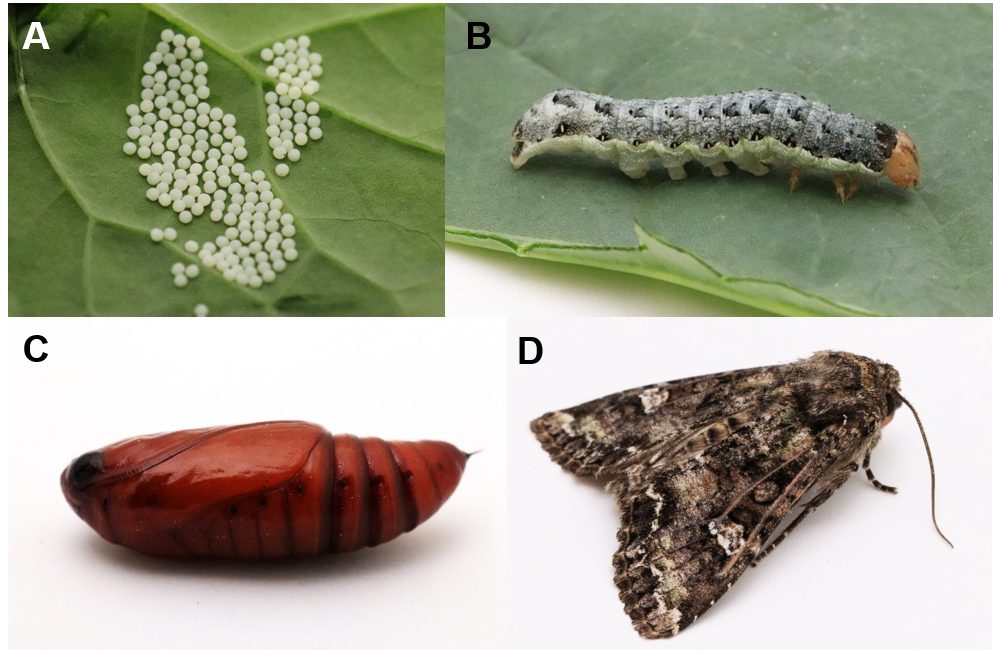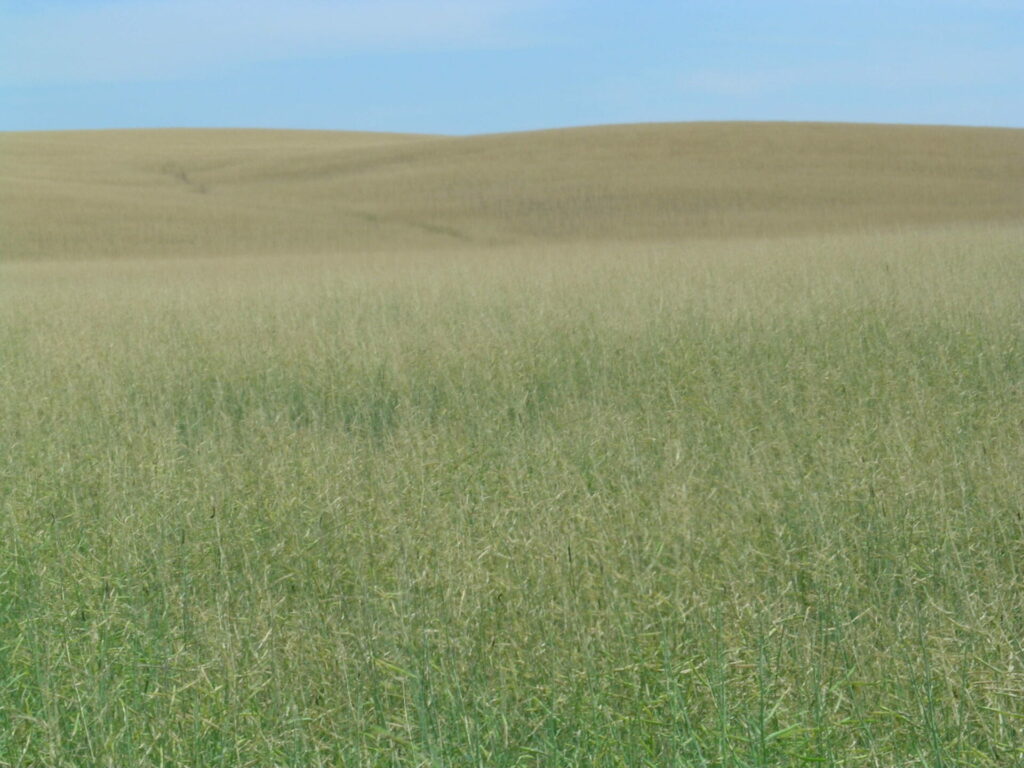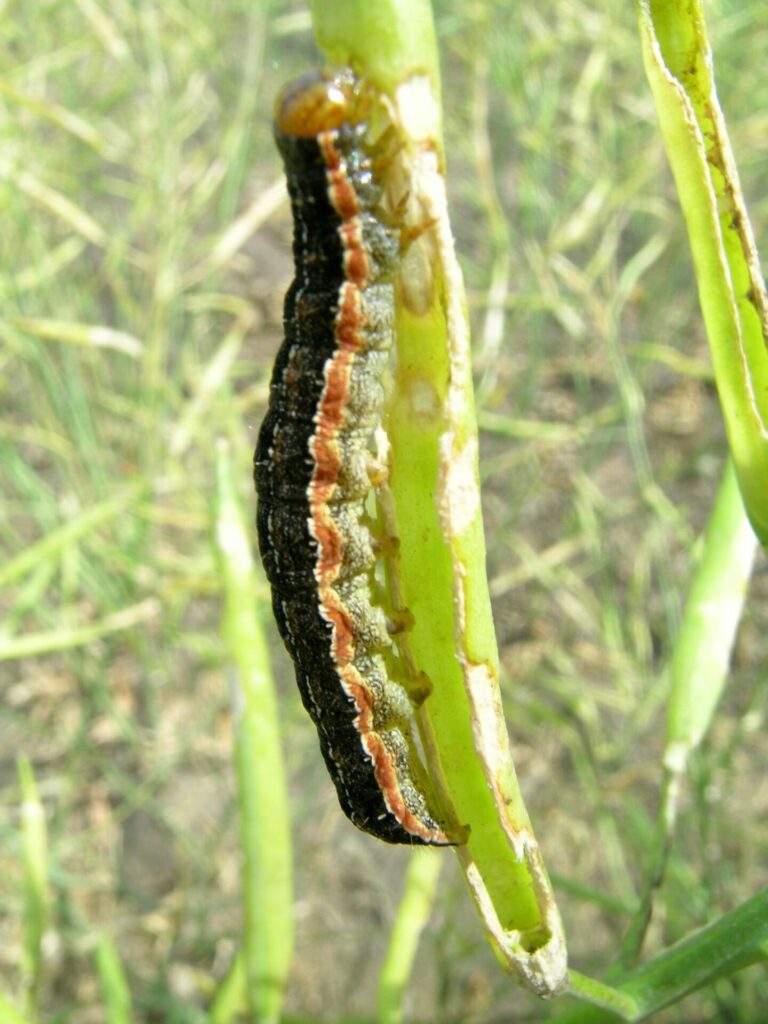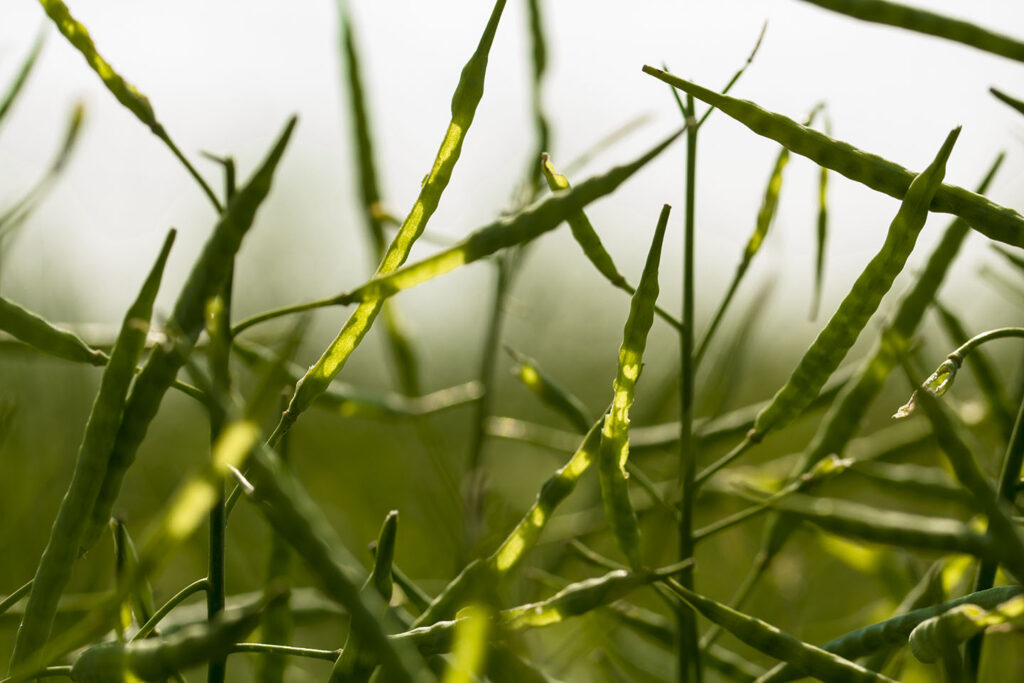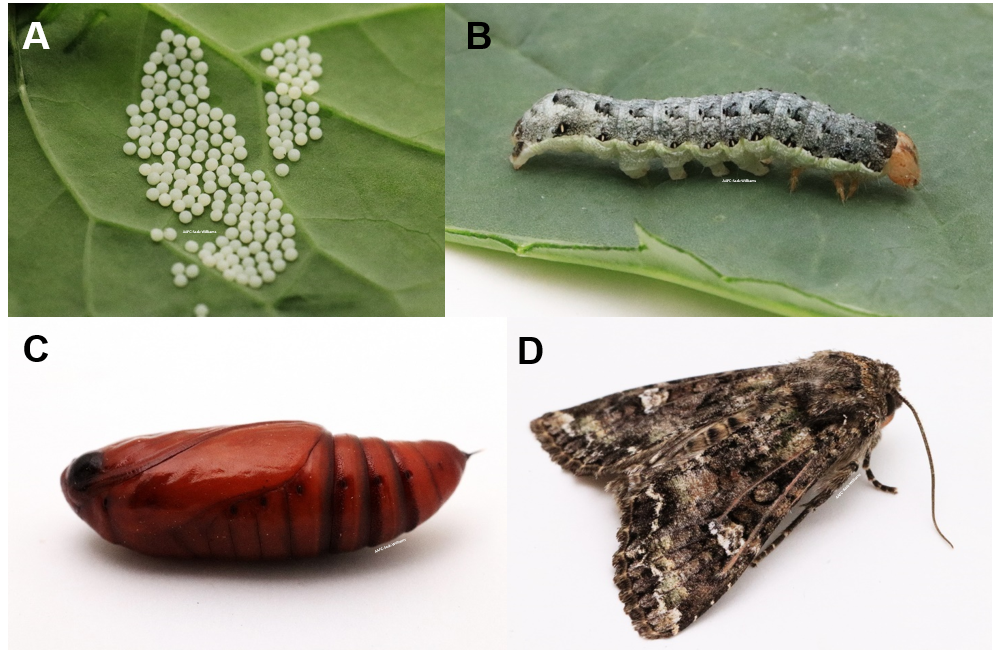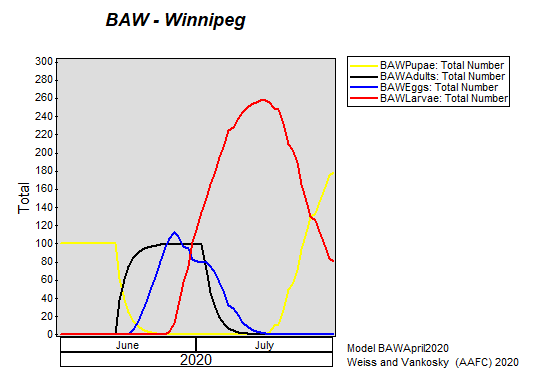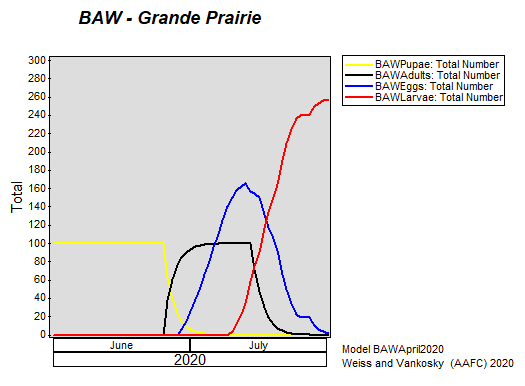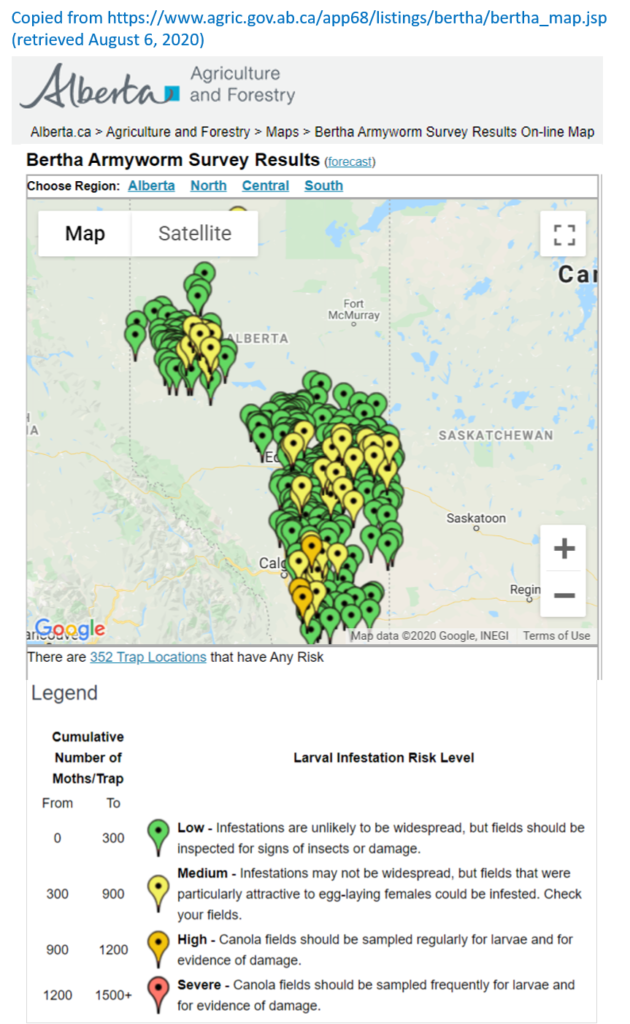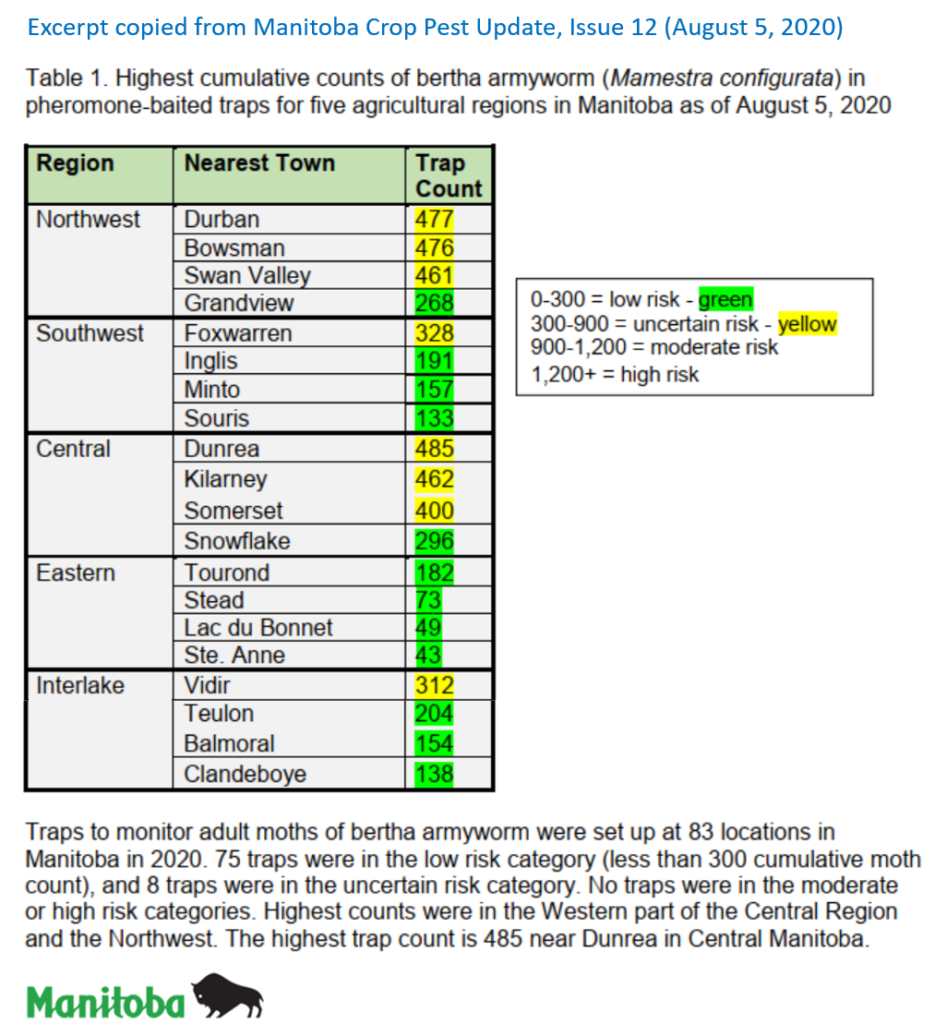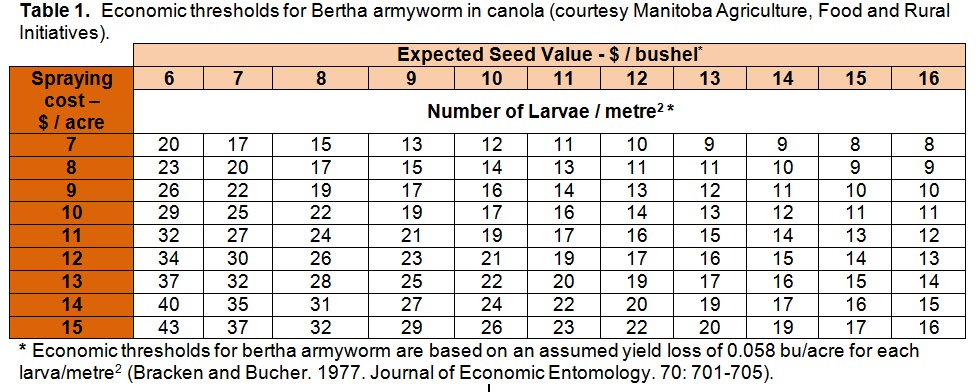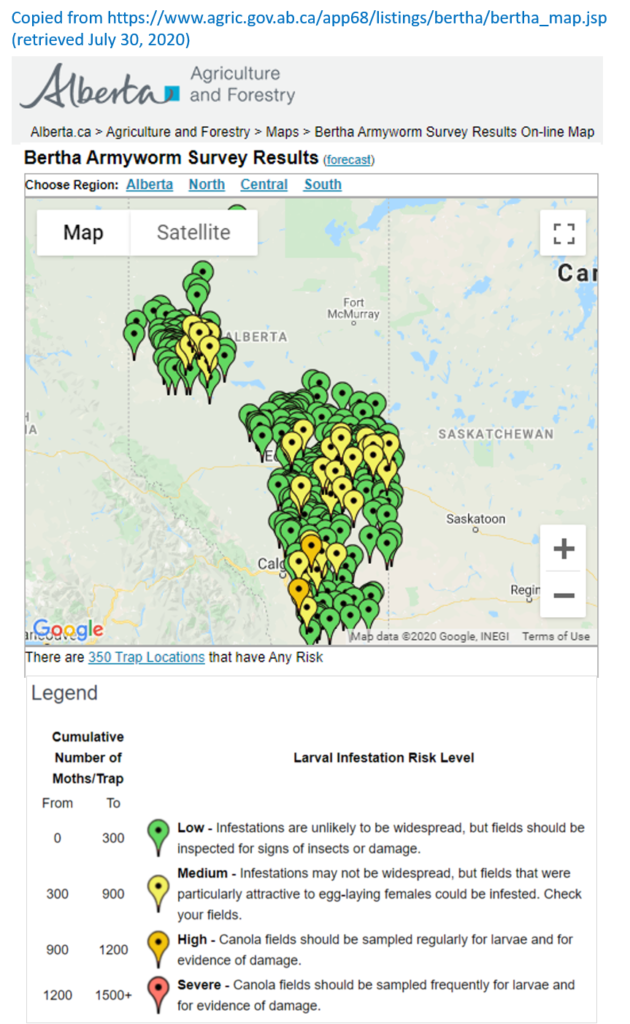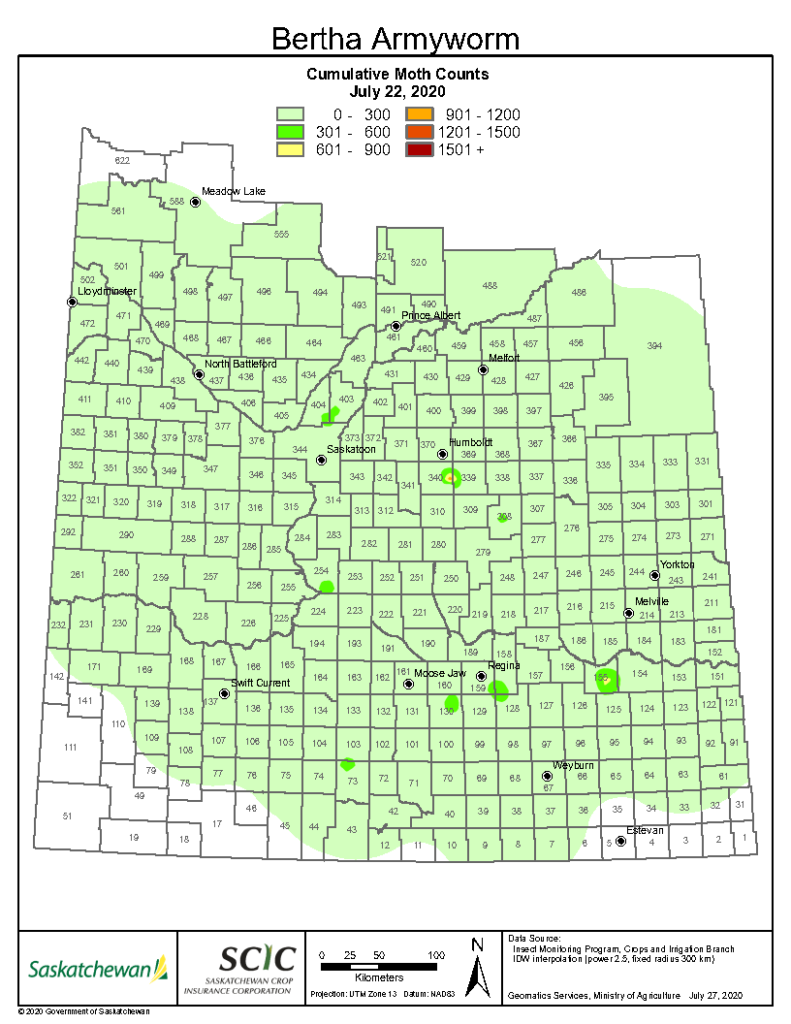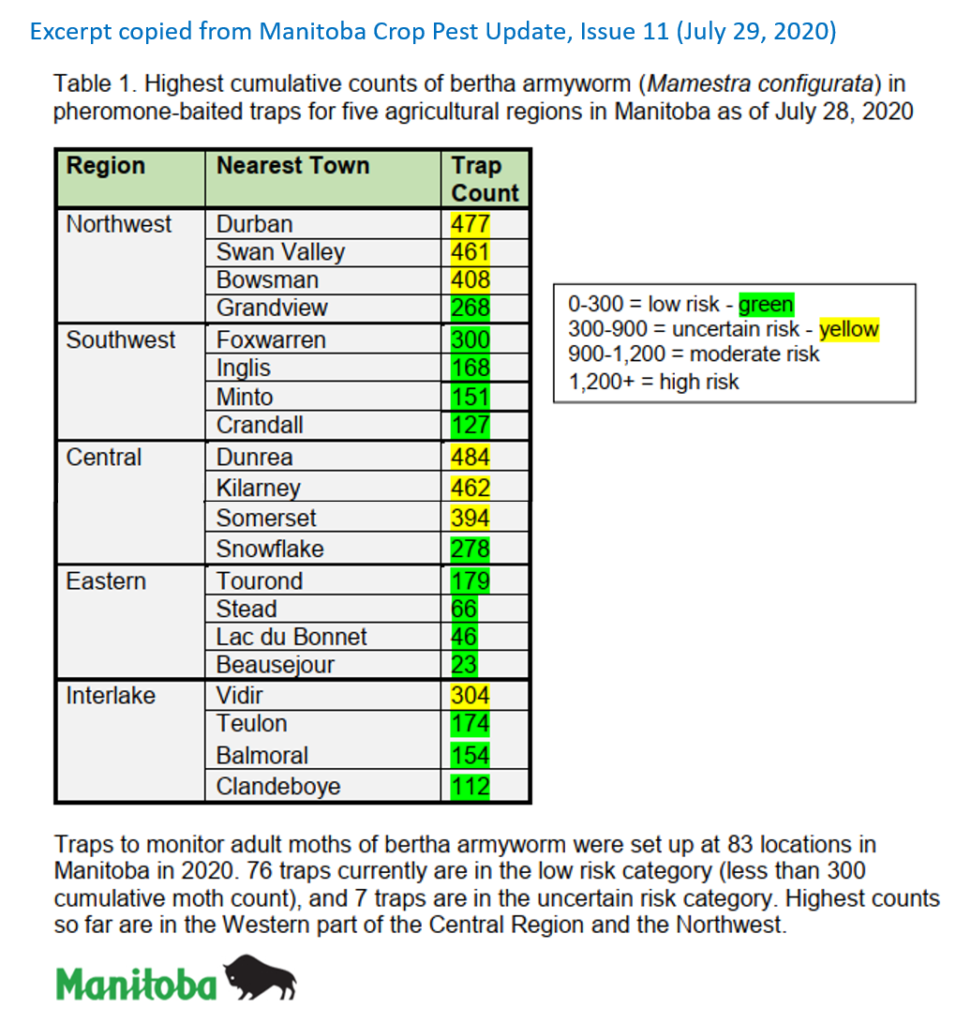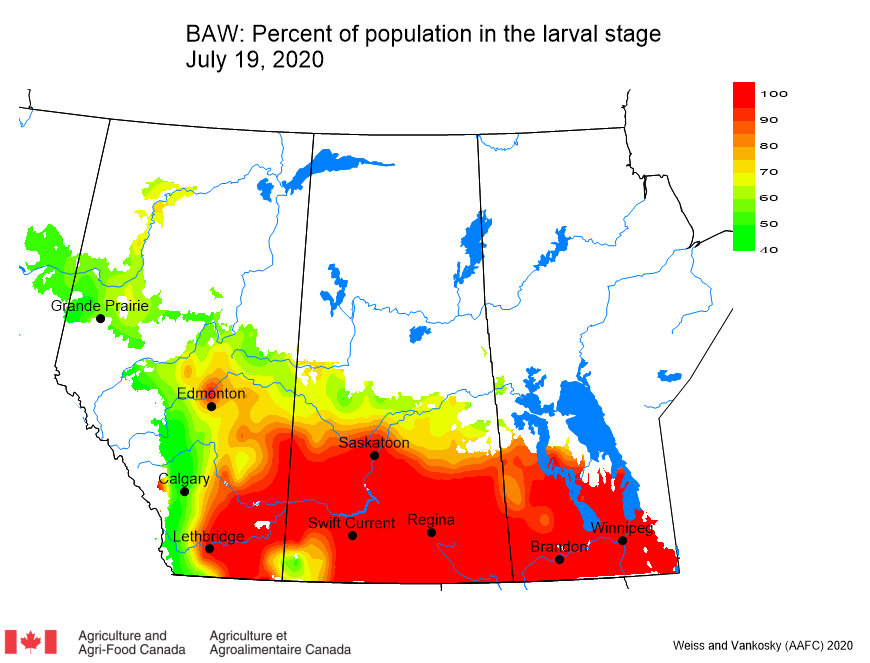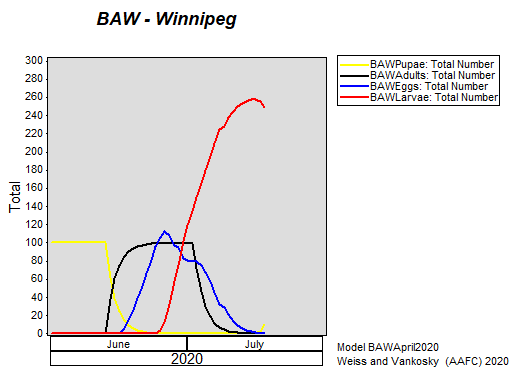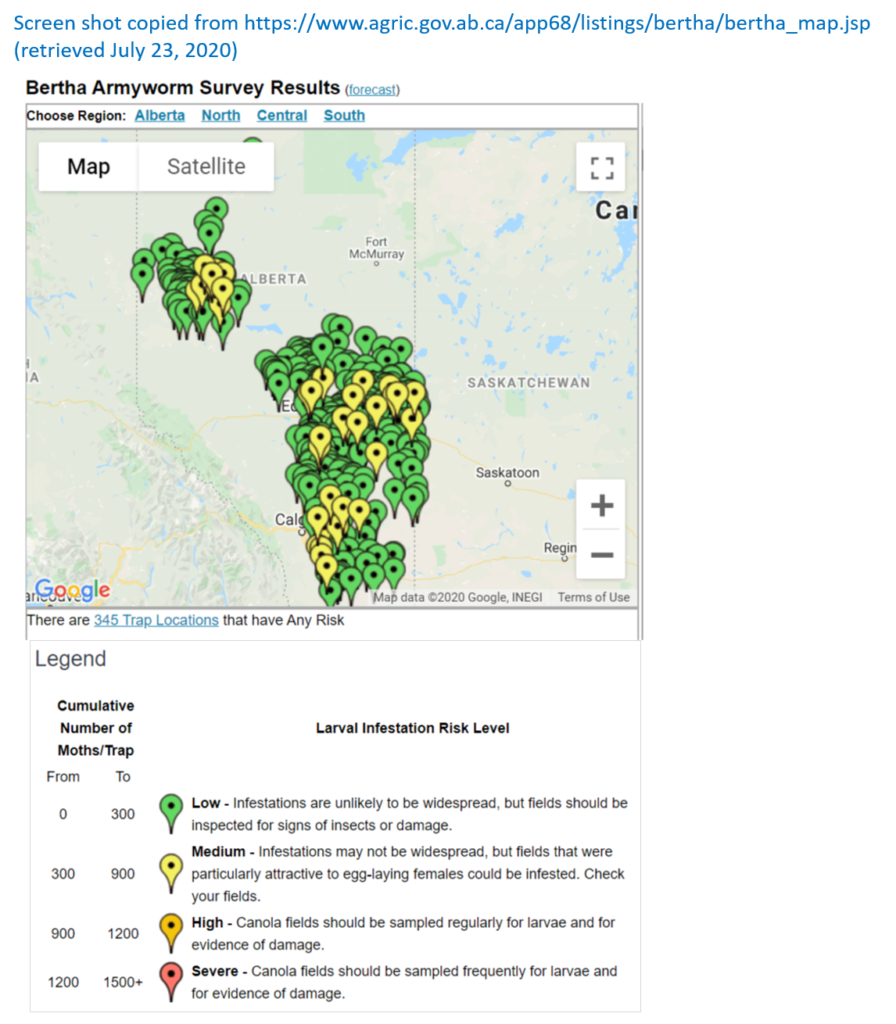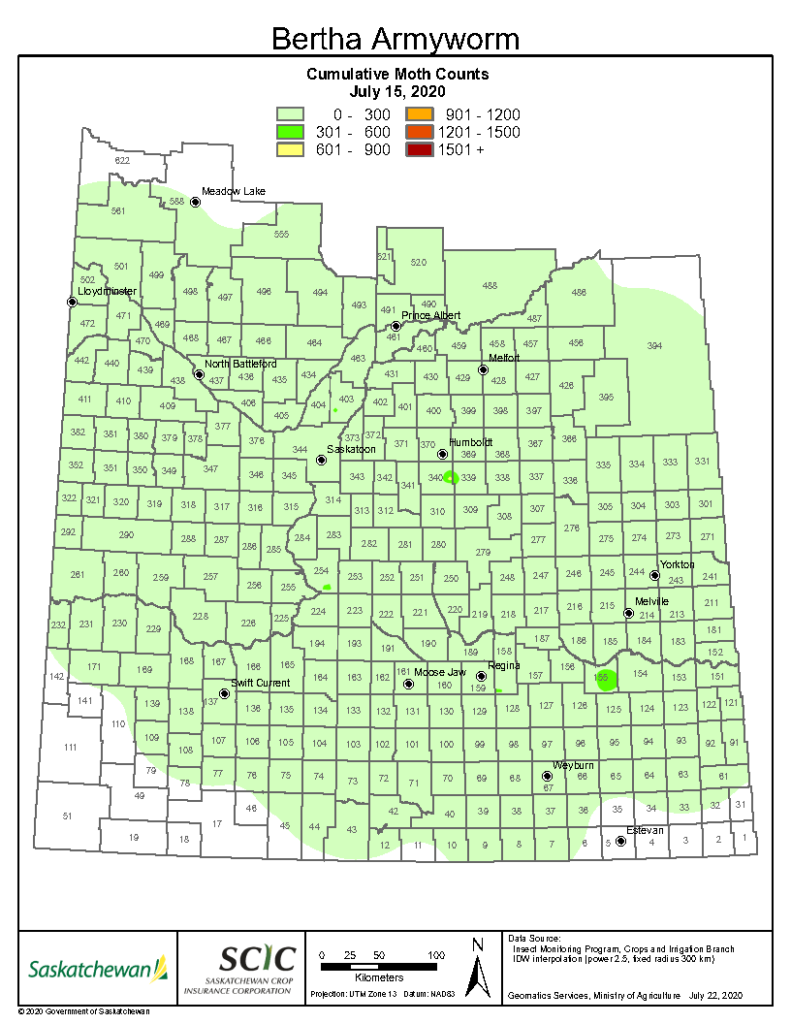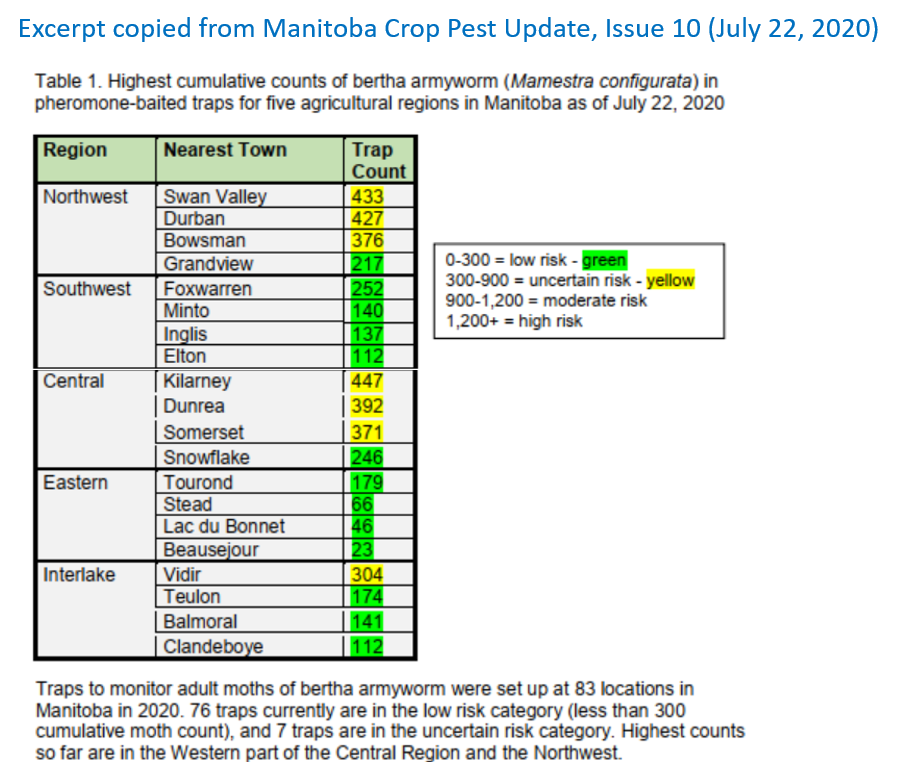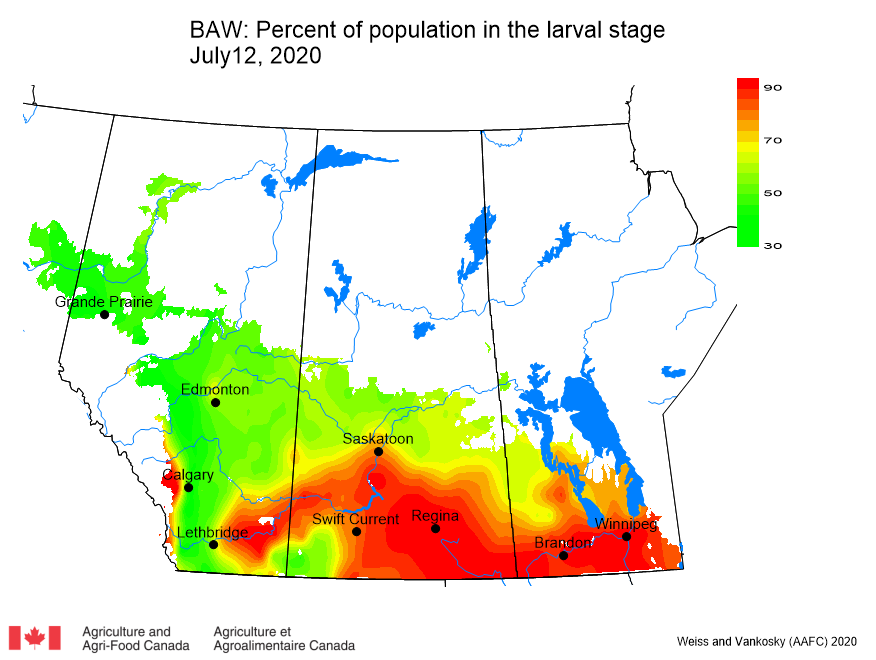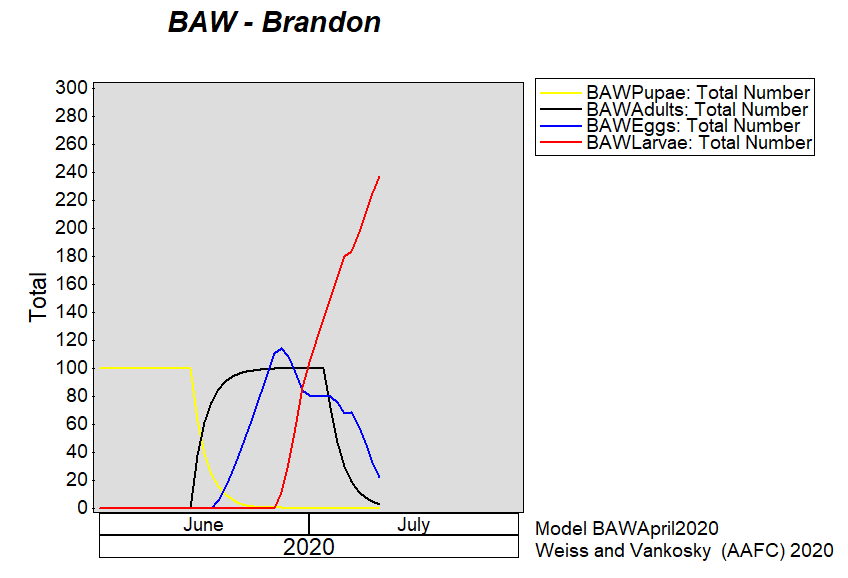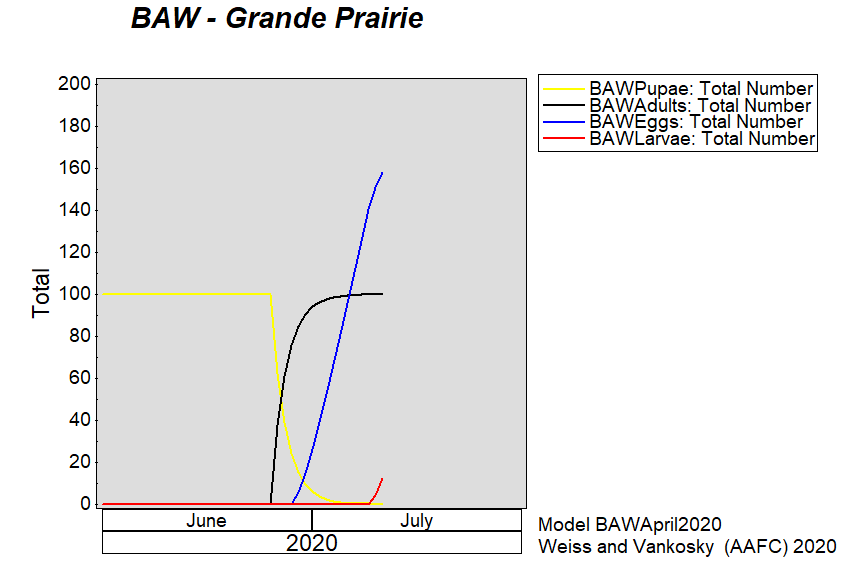European corn borer, Ostrinia nubilalis, is a generalist pest of a variety of crops, including corn, potatoes, beans, sugar beets, tomatoes, quinoa, and millet. European corn borer is an occasional pest of crops in western Canada; as many of its hosts are grown in western Canada, it is important to monitor for European corn borer. In eastern Canada, European corn borer is an important pest and its populations are monitored by the Great Lakes and Maritimes Pest Monitoring Network and by the Réseau d’avertissements phytosanitaires in Quebec.
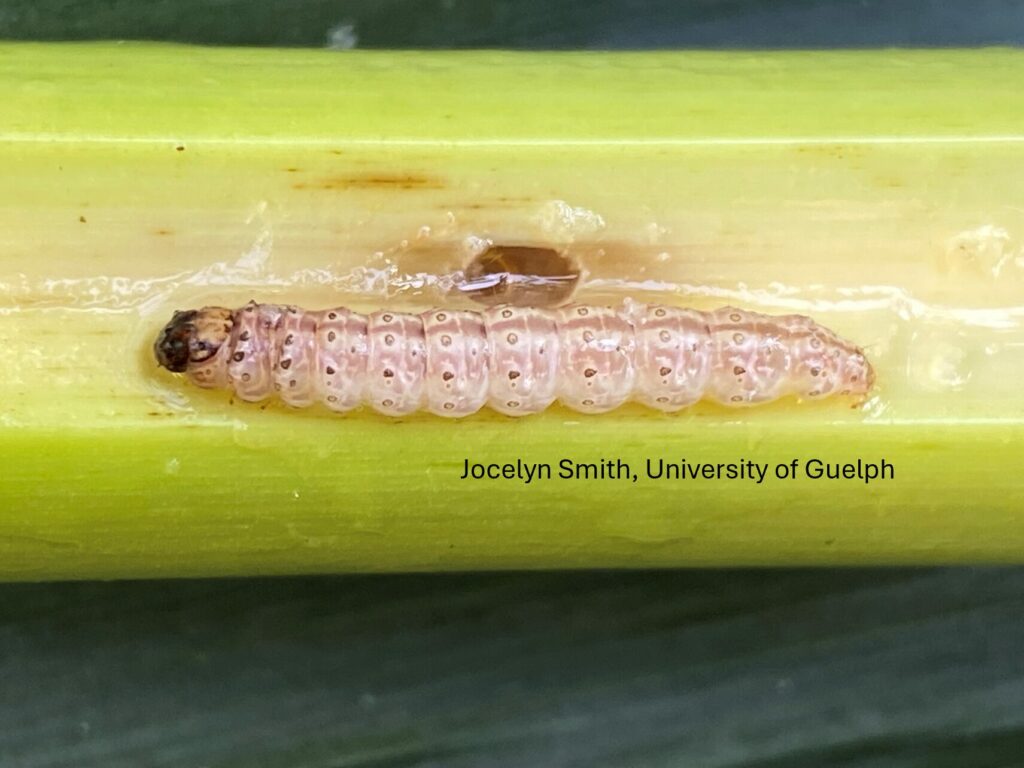
In western Canada, European corn borer has one generation per year. Adult female moths lay eggs in clusters on the underside of leaves in June, July and August. Larvae can typically be found feeding on leaves starting in July. Larval feeding continues until the larvae reach the fifth instar, which overwinters.
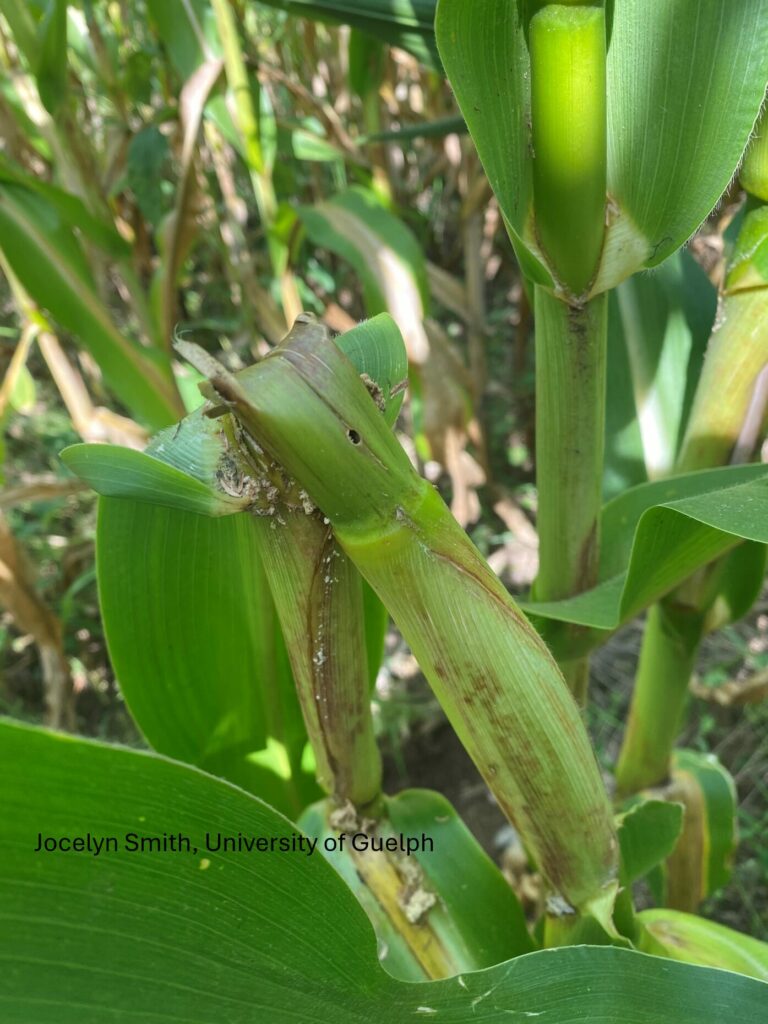
Early instar European corn borer larvae eat the leaves of their host plants. As the larvae grow, they tend to begin feeding on the midrib of leaves and on plant stems by tunneling into these plant structures. In corn, the growing larvae can mine into and feed on the corn tassels. Damage to the leaves and stems caused by European corn borer larvae can cause dieback, especially to young plants. Damage to the stems caused by tunneling larvae can weaken the plants, leaving them prone to breakage during storms or in windy conditions. Damage to the stems also interrupts nutrient cycling in infested plants, which can affect the quality and quantity of yield.
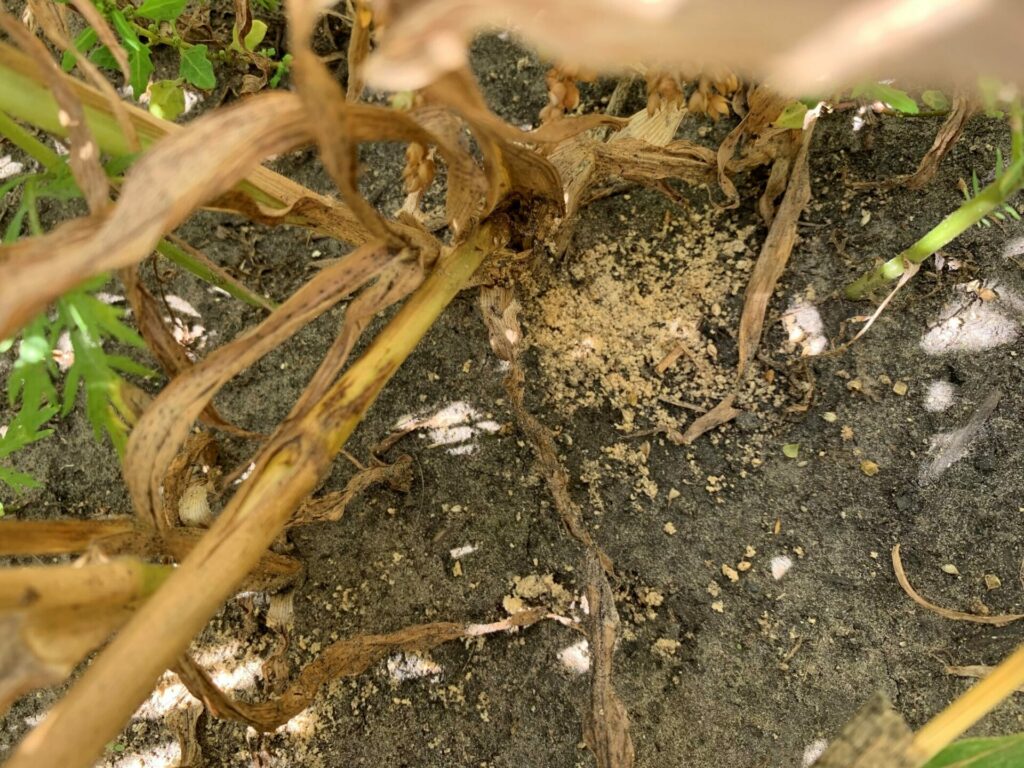
Later instar larvae often begin feeding on the reproductive structures of the host plant: the pods, fruits, or ear shanks. Larval feeding to these structures affects the marketability of the crop; in many crops, including sweet corn and peppers, there is zero tolerance for European corn borer damage.
The Insect Community of Practice, a committee of the Canadian Plant Health Council has developed a harmonized monitoring protocol for European corn borer. This protocol can be used in any of the many crops that European corn borer can infest, not just corn.
For more information, please read the European corn borer page in Field Crop and Forage Pests and their Natural Enemies in Western Canada, also available in French. You can also find information from Manitoba Agriculture, OMAFRA, and the Canadian Corn Pest Coalition.

